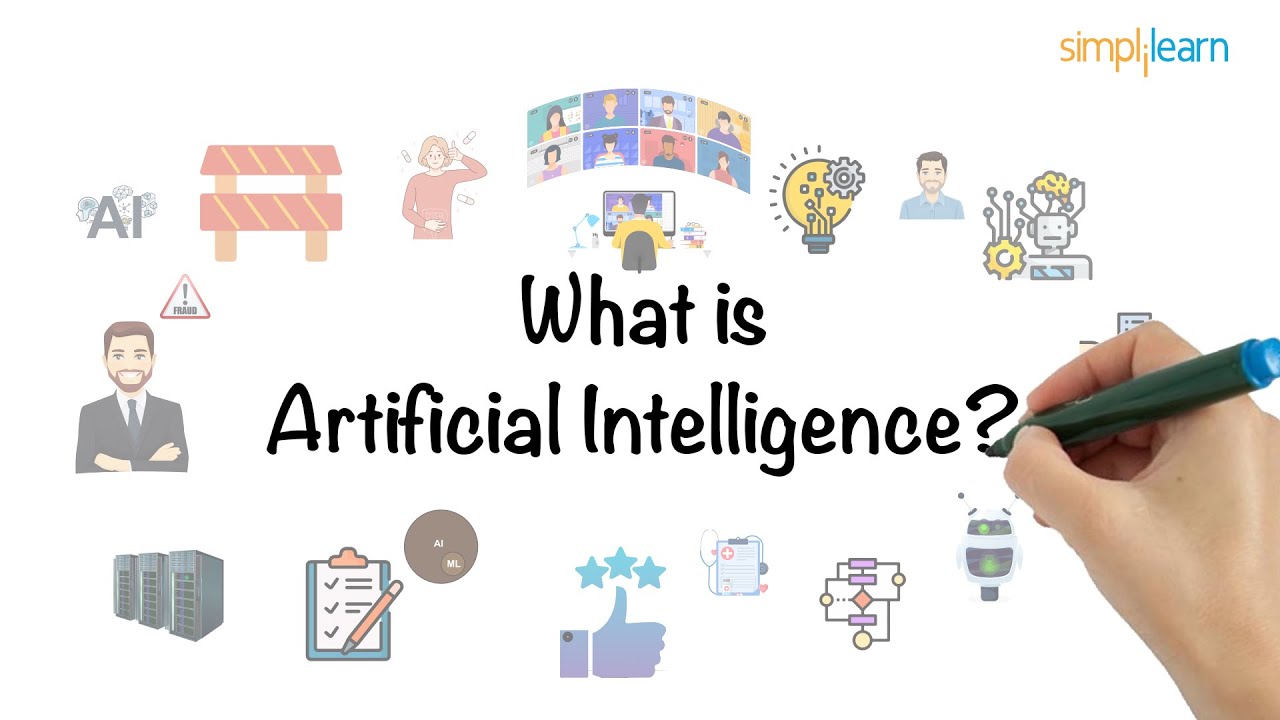Imagine a weekend where you decide to relax and watch a movie recommended by Netflix. Before heading out, you ask Siri about the weather and find out it’s going to rain. But no worries, you hop into your Tesla and let the autopilot take over on the highway. After a day filled with technological conveniences, you start to wonder how these devices have made your life so much easier. And that’s when you stumble upon the concept of artificial intelligence (AI). AI, or artificial intelligence, is all about making computers and machines think and act like humans. It’s not a new term, having been coined by computer scientist John McCarthy back in 1956. With the advancement of computing power, AI has evolved and is now being used in various fields, from movie recommendations by Netflix to virtual assistants like Siri. In fact, there are three main types of AI: artificial narrow intelligence, which focuses on specific tasks; artificial general intelligence, which aims to comprehend multiple intellectual skills; and artificial super intelligence, where machines surpass human intelligence. Exciting, isn’t it? So, sit back, relax, and dive into the world of AI in this article to learn more about its fundamentals and critical technicalities.
What is Artificial Intelligence?
Definition of Artificial Intelligence
Artificial Intelligence (AI) refers to the development and implementation of computer-based machines that can think and act like humans. It involves creating intelligent systems that have the ability to perceive, understand, learn, and problem-solve. AI aims to replicate human intelligence in machines, enabling them to perform tasks that typically require human intelligence.
The term “Artificial Intelligence” was coined by John McCarthy, a computer scientist, in 1956. However, it took time for AI to evolve and reach its current capabilities due to the need for significant computing power.
Evolution of Artificial Intelligence
Since its inception, AI has undergone significant advancements and developments. With the improvement in computing power and the availability of vast amounts of data, AI has become more accessible and capable. The evolution of AI has been driven by the increasing demand for intelligent systems that can automate tasks, improve efficiency, and provide innovative solutions.
Over the years, AI has found applications in various industries, including healthcare, finance, education, robotics, and more. The ability of AI to analyze data, make predictions, and adapt to changing environments has made it an invaluable tool in solving complex problems.

Types of Artificial Intelligence
Broadly classified, there are three types of Artificial Intelligence: Artificial Narrow Intelligence (ANI), Artificial General Intelligence (AGI), and Artificial Super Intelligence (ASI). Each type represents different levels of intelligence and capabilities.
Artificial Narrow Intelligence (Weak AI)
Artificial Narrow Intelligence refers to AI systems that are designed to perform a specific task or set of tasks. These systems are trained to handle narrow domains and excel in specific areas. Examples of ANI include voice assistants like Siri and Alexa, chatbots, recommendation systems like those used on Netflix and Amazon, and autonomous vehicles.
ANI has limited capabilities and cannot perform tasks outside of its designated domain. These systems are designed to assist humans in completing tasks efficiently and enhancing user experiences in specific areas.
Artificial General Intelligence (AGI)
Artificial General Intelligence, also known as Strong AI, refers to AI systems with human-level intelligence and the ability to understand, learn, and apply knowledge across various domains. AGI aims to possess the same cognitive abilities and problem-solving skills as humans.
The development of AGI is still a work in progress. While there have been notable advancements, such as IBM’s Watson and OpenAI’s GPT-3, achieving true AGI remains a challenging task. AGI has the potential to revolutionize industries by automating complex tasks, enabling sophisticated decision-making, and driving innovation.
Artificial Super Intelligence (ASI)
Artificial Super Intelligence represents AI systems that surpass human intelligence. ASI is a hypothetical concept that involves machines possessing highly advanced cognitive abilities and capabilities far beyond human understanding. While ASI remains speculative, it is the subject of much fascination and discussion in both scientific and popular contexts.
Relationship between AI, Machine Learning, and Deep Learning
Artificial Intelligence encompasses various subfields, including Machine Learning (ML), Deep Learning (DL), and Natural Language Processing (NLP). ML, DL, and NLP are integral components of AI and play crucial roles in its development and applications.

Machine Learning
Machine Learning is a subfield of AI that focuses on enabling machines to learn from data and improve their performance without explicit programming. It involves developing algorithms and models that can automatically analyze and interpret data, identify patterns, and make predictions or decisions.
By training models on massive datasets, machines can learn to recognize and classify patterns, make accurate predictions, and automate tasks. Machine Learning has found applications in multiple domains, such as spam detection, medical diagnosis, fraud detection, recommendation systems, and image recognition.
Deep Learning
Deep Learning is a subset of Machine Learning that uses artificial neural networks inspired by the structure and function of the human brain. Deep Learning algorithms are designed to mimic the human brain’s ability to process and analyze data by building complex hierarchical representations.
Deep Learning has revolutionized pattern recognition and achieved remarkable success in tasks such as computer vision, natural language processing, speech recognition, and autonomous driving. Deep Learning models have shown the ability to understand unstructured data such as images, audio, and text, enabling breakthroughs in AI capabilities.

Natural Language Processing
Natural Language Processing is a branch of AI that focuses on enabling computers to understand, interpret, and generate human language. NLP involves developing algorithms and models that can process and analyze human language, allowing machines to interact with humans in a natural and meaningful way.
NLP applications include language translation, sentiment analysis, chatbots, voice assistants, and text summarization. By leveraging NLP, machines can understand and generate human language, improving communication between humans and computers.
In conclusion, Artificial Intelligence is a rapidly evolving field that aims to develop intelligent systems capable of thinking and acting like humans. With the advancements in AI, ML, and DL, machines are becoming increasingly efficient in understanding and interpreting complex data, leading to a wide range of applications across industries. As AI continues to progress, it offers exciting opportunities for AI engineers and has the potential to transform various sectors, bringing about significant advancements in technology and society as a whole.






Leave a Reply